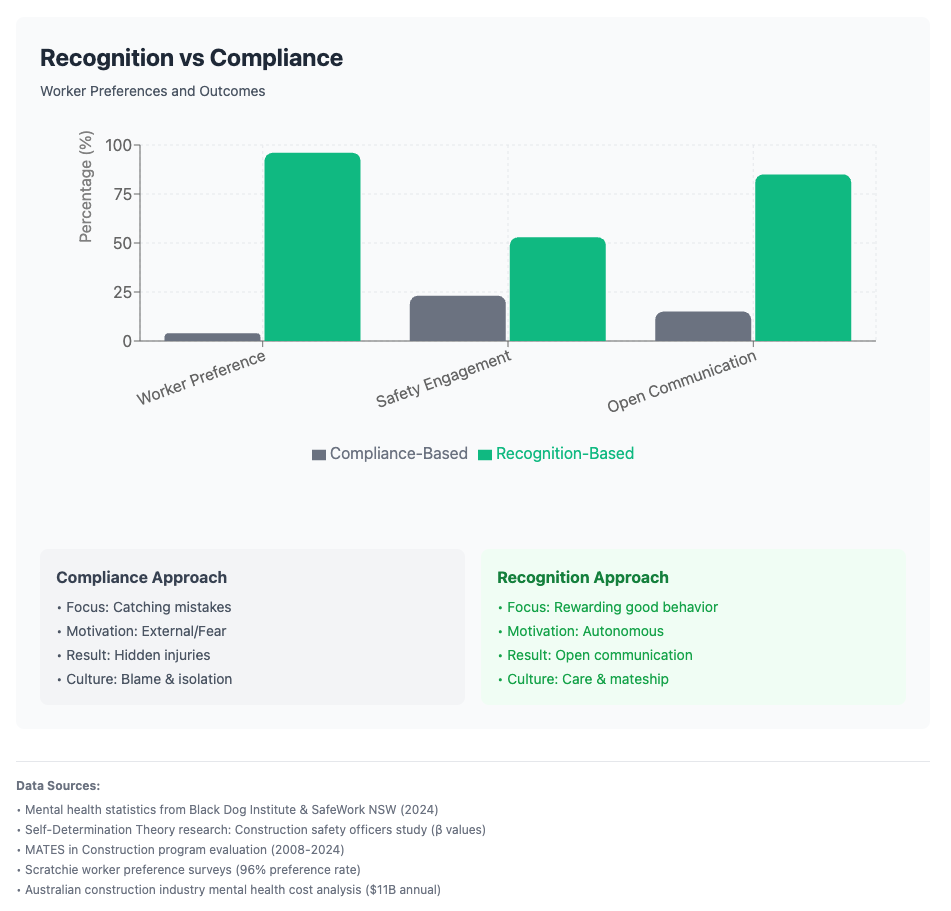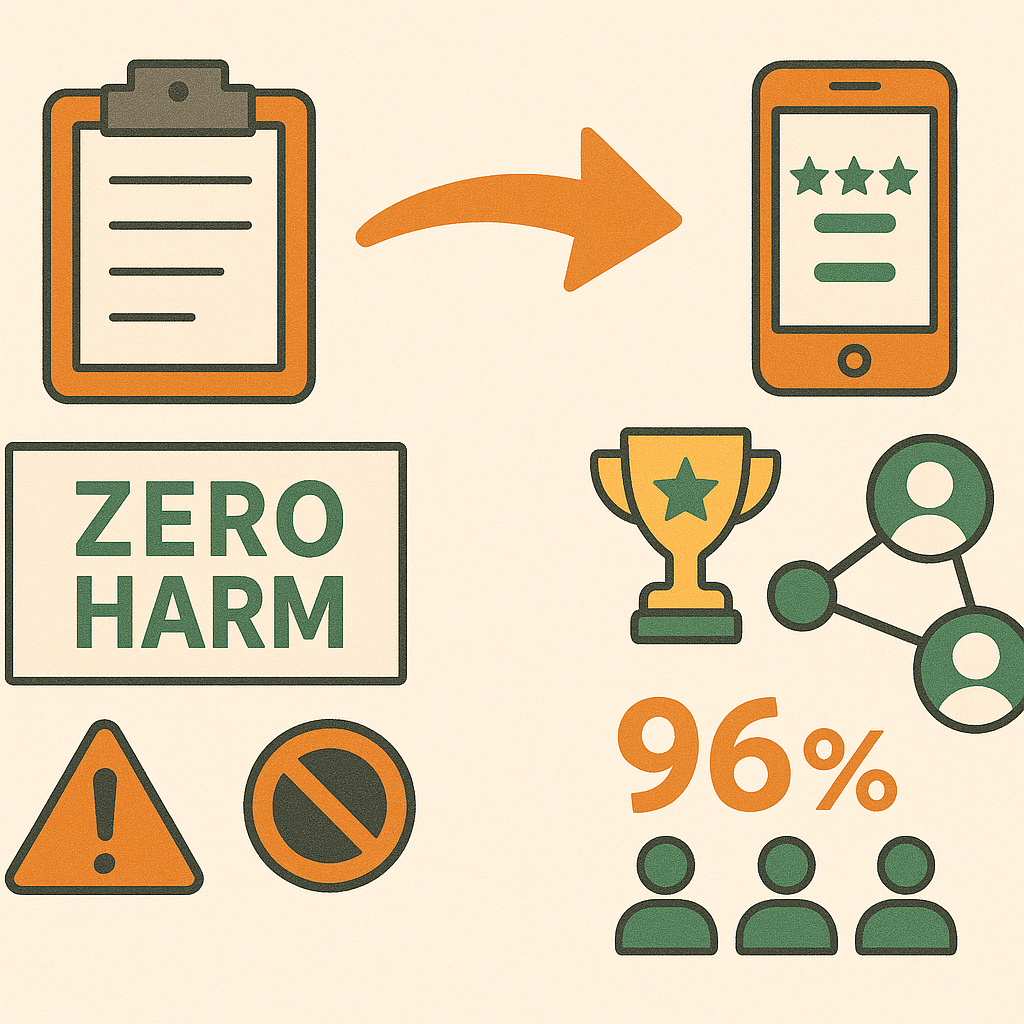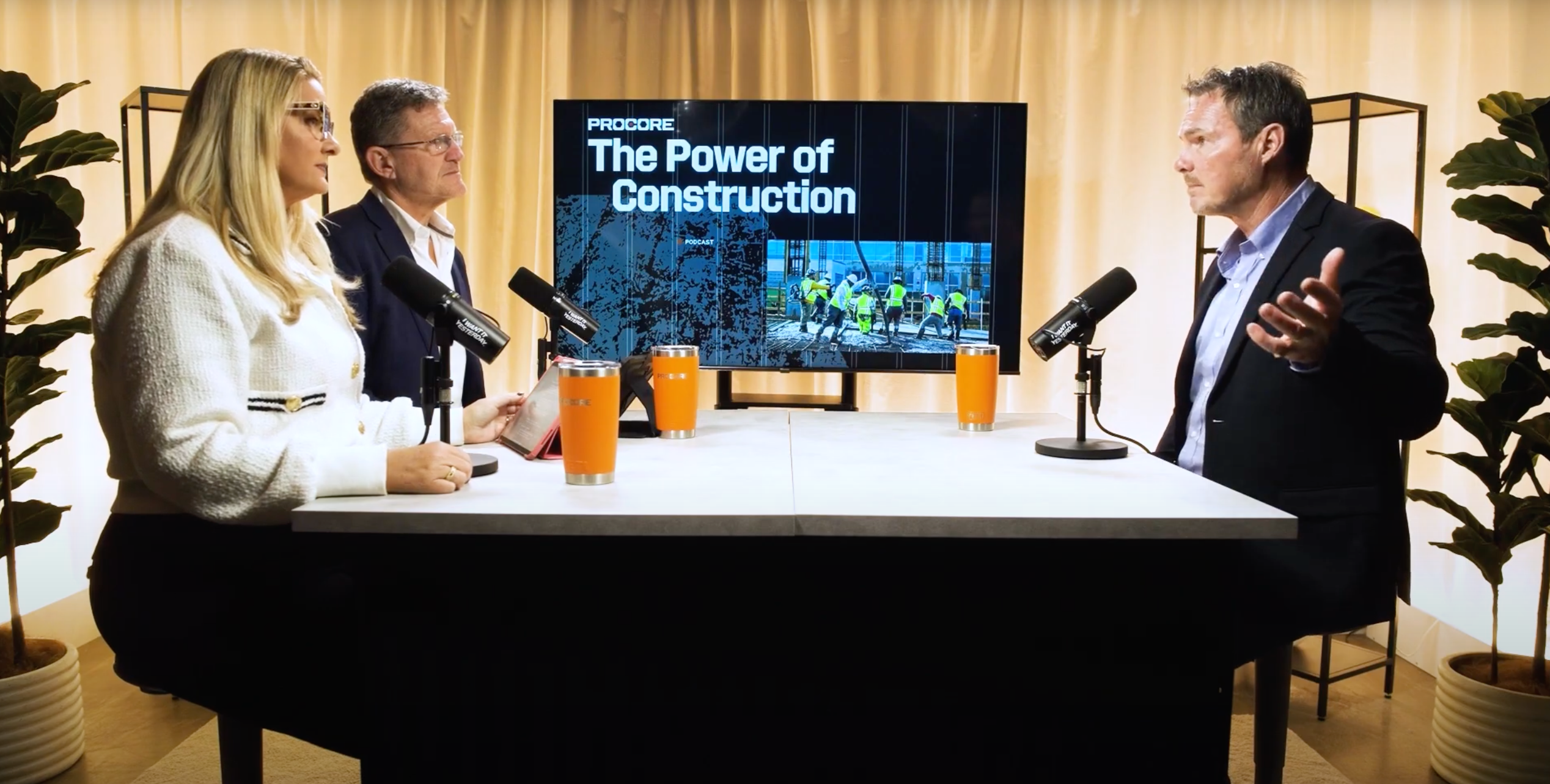After 20 years of walking construction sites with a clipboard, Garry Mansfield discovered something that changed everything about how he approached safety. It wasn't another rule, another form, or another compliance measure. It was understanding the psychology of why workers actually change their behaviour.
In a recent podcast conversation on The Power of Construction, Mansfield, co-founder of Scratchie and former Head of Workplace Safety at Richard Crookes Construction, revealed a truth that challenges decades of traditional safety management: "I've been on sites where there's been suicide, murder, and fatalities from other incidents, and I just said, there's a piece missing. What is the missing piece? And I can finally say it's recognizing and rewarding workers when they do the right thing."
The Compliance Paradox: When More Rules Create Less Safety
The Australian construction industry faces a stark reality. Despite having one of the world's most comprehensive workplace health and safety programs, construction workers are experiencing unprecedented levels of disengagement and mental health challenges. According to recent data, 70% of workers are disengaged, while mental health claims have increased by 97%. Even more concerning, construction workers are six times more likely to die by suicide than from workplace accidents.
The traditional approach has relied heavily on what Mansfield calls "the stick" – compliance-based safety management focused on catching people doing things wrong. Lost Time Injury (LTI) rates, Zero Harm targets, and endless checklists have become the industry standard. Yet as Mansfield points out in the podcast, these lag indicators are "a measure of your injury management, not your safety performance."
This creates what researchers identify as a compliance paradox. When safety becomes purely about avoiding punishment rather than genuine care, workers disconnect. The Black Dog Institute found that one in four (25%) construction workers experience high symptoms of depression and/or anxiety – twice the rate of the general population. The pressure to maintain zero-harm statistics often leads to underreporting, with workers hiding injuries rather than seeking help.

The Dopamine Factor: Understanding What Actually Drives Behaviour Change
"We're the dopamine dealers here at Scratchie," Mansfield jokes in the podcast, "or microdosing dopamine." But behind the humour lies serious behavioural science.
Self-Determination Theory (SDT), developed by psychologists Deci and Ryan, provides the framework for understanding why recognition succeeds where compliance fails. Research shows that SDT's three psychological needs – autonomy, competence, and relatedness – are fundamental to motivating safety behaviour in construction workers.
A study of 195 safety officers found that autonomous motivation was significantly activated by autonomy-oriented support from project managers (β = 0.520), which then significantly affected safety performance (β = 0.231) and levels of engagement with safety initiatives (β = 0.529).
When Mansfield describes walking onto a site where workers were coming down from elevated work platforms to show him their pre-start checklists, eager for recognition rather than hiding from inspection, he's describing SDT in action. The immediate reward – what he calls "instant gratification" – triggers a dopamine response that reinforces positive behaviour far more effectively than fear of punishment ever could.
From Stick to Carrot: The Recognition Revolution in Practice
The transformation Mansfield witnessed firsthand is striking. On one project, a safety professional told him: "I don't spend all day trying to manage the fundamentals of safety anymore. The fundamentals that we talk about for PPE and exclusion zones and traffic management... are given now because they get recognized and rewarded."
This isn't just feel-good management – it's backed by data. Scratchie's surveys found that 96% of workers prefer to work on projects using recognition-based safety approaches. As Mansfield explains, "96% of workers are putting their hand up to say, just recognize when we do the right thing occasionally, and we'll be on your team."
The gamification element adds another psychological layer. With leaderboards, instant rewards, and team challenges, safety becomes something workers actively engage with rather than grudgingly comply with. Research demonstrates that psychological capital (hope, self-efficacy, resilience, and optimism) significantly predicts proactive safety behaviour when mediated by autonomous safety motivation.
But it's not just about individual rewards. The podcast reveals how recognition rebuilds the mateship culture that's been lost in Australian construction. Andy Rampton, Procore's Senior Director of Industry Transformation APAC, notes: "A good construction site is one where you form those bonds and those relationships that transition into mateship."
Technology as the Missing Link: Enabling Real-Time Recognition
For decades, the construction industry has known that recognition matters. Companies have tried monthly safety awards, golden hard hats, and holiday giveaways. But as Mansfield points out, "the missing part is the technology piece... it needs to be instant."
Modern technology enables what traditional approaches couldn't: immediate recognition at the point of positive behaviour. When safety rewards are designed to support autonomy, competence, and relatedness rather than control behaviour, they enhance intrinsic motivation for safety. Gamification, mobile applications, and real-time feedback systems allow supervisors to recognise safe behaviours instantly, supporting the competence need through immediate feedback.
This technological enablement is crucial because it addresses a fundamental challenge in construction: subcontractors who "parachute into a project," as Mansfield's co-founder James Kell describes it. These workers haven't bought into company values or culture – they've come to work hard, get paid, and go home safely. Technology-enabled instant recognition creates immediate buy-in where traditional induction training fails.
The data these systems generate also provides unprecedented insights into leading indicators. Rather than waiting for accidents to measure safety performance, companies can now track positive behaviours, identify risk areas in real-time, and adjust their approach proactively. As Mansfield explains: "We can see what areas are we rewarding for? What areas are we not rewarding for? Do we need to look at modifying our training program or do we need to provide more resources?"
The Human Cost of Getting It Wrong
The stakes couldn't be higher. Australian construction workers face an age-adjusted suicide rate of 26.6 deaths per 100,000 workers – approximately double the rate of other employed Australian men. This translates to approximately 190 construction workers lost to suicide annually, or one every two days.
Mental health conditions in construction cost Australian businesses nearly $11 billion annually, while suicide and suicidal behaviour among construction workers cost an estimated $1.57 billion per year. These aren't just statistics – they represent families destroyed, potential lost, and an industry struggling with a crisis that traditional safety management has failed to address.
Research from Western Australia reveals that loneliness emerged as the strongest predictor of suicidal ideation among construction workers. When safety management focuses solely on compliance and punishment, it exacerbates the isolation workers already feel. Recognition and positive reinforcement, on the other hand, build connection and belonging – fundamental human needs that protect mental health.
Beyond Zero Harm: Building a Culture of Care
Perhaps no aspect of traditional safety management draws more criticism in the podcast than the concept of "Zero Harm." As Mansfield bluntly states: "If you want to really know about zero harm, just go and ask the worker... step out of your ivory tower and ask the worker, what do you think of this zero harm goal that we have?"
The pursuit of zero creates what researchers identify as a culture of blame. When anything above zero is seen as failure, the focus shifts from genuine safety improvement to managing statistics. Workers know this. They see colleagues with broken fingers being sent to "work from home" to maintain zero LTI rates. They understand that the posters proclaiming "Zero Harm" often mask a reality where injuries are hidden rather than prevented.
Mansfield suggests a fundamental reframe: "If that word said 'care'... I think the worker would adopt that far better than this absolute that anything above zero is failure." This shift from compliance to care represents more than semantic change – it's a fundamental reimagining of what safety culture can be.

The Path Forward: What This Means for Construction
The evidence is clear: recognition-based approaches rooted in psychological science deliver better safety outcomes than traditional compliance methods. But implementing this shift requires more than just adding a rewards program to existing practices.
Companies need to:
- Conduct psychological needs assessments to understand how well workers' needs for autonomy, competence, and relatedness are being met
- Redesign safety training to move beyond rule memorisation toward competence-building and scenario-based learning
- Create forums for worker input, supporting autonomy by involving crews in safety planning
- Implement instant recognition systems that reward positive behaviours in real-time
- Foster peer support through mentoring relationships and team-based safety challenges
The MATES in Construction program, which has trained over 300,000 individuals in mental health awareness and is supported by 22,000 volunteer 'connectors', demonstrates what's possible when the industry takes a human-centred approach. Studies indicate a 10% reduction in relative risk of suicide behaviour in the five years after MATES implementation, with an economic evaluation suggesting a potential return on investment of $4.60 per $1 invested.
As Garry Mansfield's journey from clipboard-carrying safety officer to "dopamine dealer" demonstrates, the future of construction safety isn't about more rules or stricter compliance. It's about understanding human psychology, leveraging technology for instant recognition, and building cultures where workers feel valued, competent, and connected.
The 96% of workers who prefer recognition-based projects aren't asking for much. As Mansfield puts it: "Just recognize when we do the right thing occasionally, and we'll be on your team."
Watch the full conversation between Garry Mansfield, Andy Rampton, and Sasha Reed on The Power of Construction podcast to hear more insights on transforming safety culture through recognition and psychology.
For more information about implementing recognition-based safety programs, visit [Scratchie website]. To learn about mental health support in construction, contact MATES in Construction at mates.org.au










.svg)
